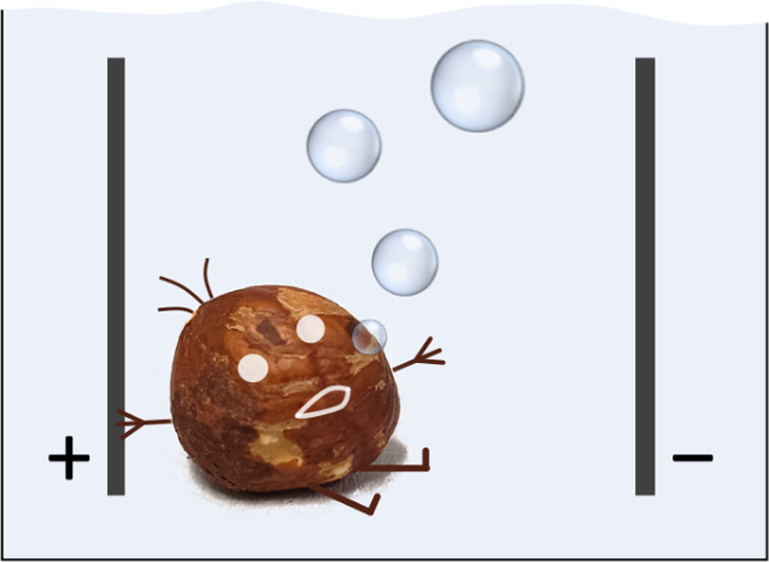Thoughts – A Place for Some Introspection
Science these days has become a quick way to produce new information and knowledge. As scientists we sometimes do our daily tasks without even thinking properly about them. But critical thinking is crucial to clearing our minds and helping us visualize what really matters. This is a place where ElectroEnergy posts some interesting and recently published articles found in the literature that will make us think on our field of research, scientific politics and science in general.

What is quality in science? What is the most important number: IF, citations or number of published papers? Is there a better way to analyse it? Does the IF really represent the reputation of a journal or is it dependent on a niche? Is it possible to succeed in a scientific career without having a solid background? How to attract the best minds to work in our universities? Is gender equality in hard sciences a policy to be implemented? and affirmative actions in graduate courses? What will be your legacy as a scientist?
The Nexus Concept

Water-Energy-Food.org Do you know about the interconection between water, energy and food – the so-called Nexus Concept? “The main components of the water-energy-food-ecosystems nexus are water, energy, food, and ecosystems. These components are interconnected and interdependent, with strong relationships and trade-offs among them. Water plays a crucial role in energy production, agriculture, and sustaining ecosystems. Energy is essential for various processes in food production, water treatment, and distribution. Food production relies heavily on water resources, and energy is integral throughout the food supply chain. Ecosystems are vital for the sustainability of water, energy, and food systems, and they are negatively impacted when these resources are used unsustainably. The nexus approach aims to analyze these interlinkages, identify synergies, manage trade-offs, and promote efficiency and sustainability across these interconnected components to achieve overall system resilience and resource security.” Studying the electroreduction of nitrate to ammonia formation, ElectroEnergy is contributing to tie this concept.
Fewer Sandwich Papers, Please

Jin, S. ACS Energy Lett. 2022, 7, 10, 3727. You have probably heard about salami papers and how harmful it is to science. But what about sandwich papers? “Just like the process of making sandwiches in fast-food sandwich shops, if one permutes different choices for each component and sets out to survey, many different (and perhaps nearly randomly designed) papers can be produced quickly (…) Different from the notorious salami papers, sandwich papers could show much hard work, be crammed with many figures, and employ the latest experimental techniques that involve the most advanced instrumentation, sometimes supplemented by theory or simulation that agree perfectly with the experimental results. They could look very impressive by most common standards, yet, the very impressive façade and dizzying display of results cannot conceal the paucity of thought behind the work. After reading some such papers, one could not help feeling that something is missing and left wanting more (…)” Let’s put heart and soul into our work and make an honest and impactful contribution to science. A good insight is worth over a million papers of two digits IF.
Electrocatalysis Goes Nuts

Akbashev, A. R. ACS Catal. 2022, 12, 4296. Fancy names are sometimes adopted in different fields to attract attention and even intentionally catalyze approval of publications and research proposals. The more adjectives before the word Chemistry, the better. The same happens in new materials for electrocatalysis. “With regard to electrocatalysis, it is quite likely that the vast majority of thousands of reports demonstrating (ultra)high electrocatalytic performance will never find any real use. The cost of production of such electrodes is too high to justify their application while the stability is too low, which is the harsh reality that often seems to be carefully ignored in the metrics-oriented electrocatalysis research (…) Electrocatalytic activity and electrochemical response have little scientific meaning when they are measured on a complex electrode that consists of multiple components: nanoscale materials (“nanoboxes”, “nanosponges”, ”nanosheets”, etc.), conductive additives, binders, and the substrate. Such systems have an enormous diversity of active sites, and they can exhibit a spatially nonuniform electrical conductivity, electrode loss, and poorly defined mass transport during operation. Decoupling these factors and performing a proper characterization of the chemical composition and structure of a surface in such cases is nearly impossible. As a result, the correlation between the chemistry/structure of specific active sites and their electrochemical response cannot be unambiguously established for such electrodes. In other words, the experimentally measured datasets represent an averaged picture and cannot be directly compared to the behavior of specific active sites predicted through quantum-chemical calculations and molecular modeling (…) The history of science shows that any field can experience difficulties with research quality when the standards for metrics-oriented publications are poorly defined and the reward for such publications is high. Keeping the focus on the scientific rigor and meaningfulness while designing research projects is crucial when one aims to move the field forward.” We should aim to advance the field and not publications to leverage our own careers. With this in mind, very complicated materials will be studied rigorously and new insights may emerge from it.
San Francisco Declaration on Research Assessment (DORA)

What is DORA? We are overwhelmed by competition in academia being peer-reviewed on a daily basis. For this reason, some of us have adopted the journal impact factor as a synonym for quality. Is it really true? “The Declaration on Research Assessment (DORA) recognizes the need to improve the ways in which researchers and the outputs of scholarly research are evaluated (…) The Journal Impact Factor is frequently used as the primary parameter with which to compare the scientific output of individuals and institutions. The Journal Impact Factor, as calculated by Thomson Reuters, was originally created as a tool to help librarians identify journals to purchase, not as a measure of the scientific quality of research in an article. With that in mind, it is critical to understand that the Journal Impact Factor has a number of well-documented deficiencies as a tool for research assessment. These limitations include: A) citation distributions within journals are highly skewed; B) the properties of the Journal Impact Factor are field-specific: it is a composite of multiple, highly diverse article types, including primary research papers and reviews; C) Journal Impact Factors can be manipulated (or “gamed”) by editorial policy; and D) data used to calculate the Journal Impact Factors are neither transparent nor openly available to the public (…) General Recommendation: 1) Do not use journal-based metrics, such as Journal Impact Factors, as a surrogate measure of the quality of individual research articles, to assess an individual scientist’s contributions, or in hiring, promotion, or funding decisions; 2) Be explicit about the criteria used in evaluating the scientific productivity of grant applicants and clearly highlight, especially for early-stage investigators, that the scientific content of a paper is much more important than publication metrics or the identity of the journal in which it was published (…)” Finding an absolute scientific metric to assess quality in science is not a trivial task. IF has been used by journals as a commercial appeal and to create an illusory scenario in emerging fields. We must remember the essence and purpose of a real science.